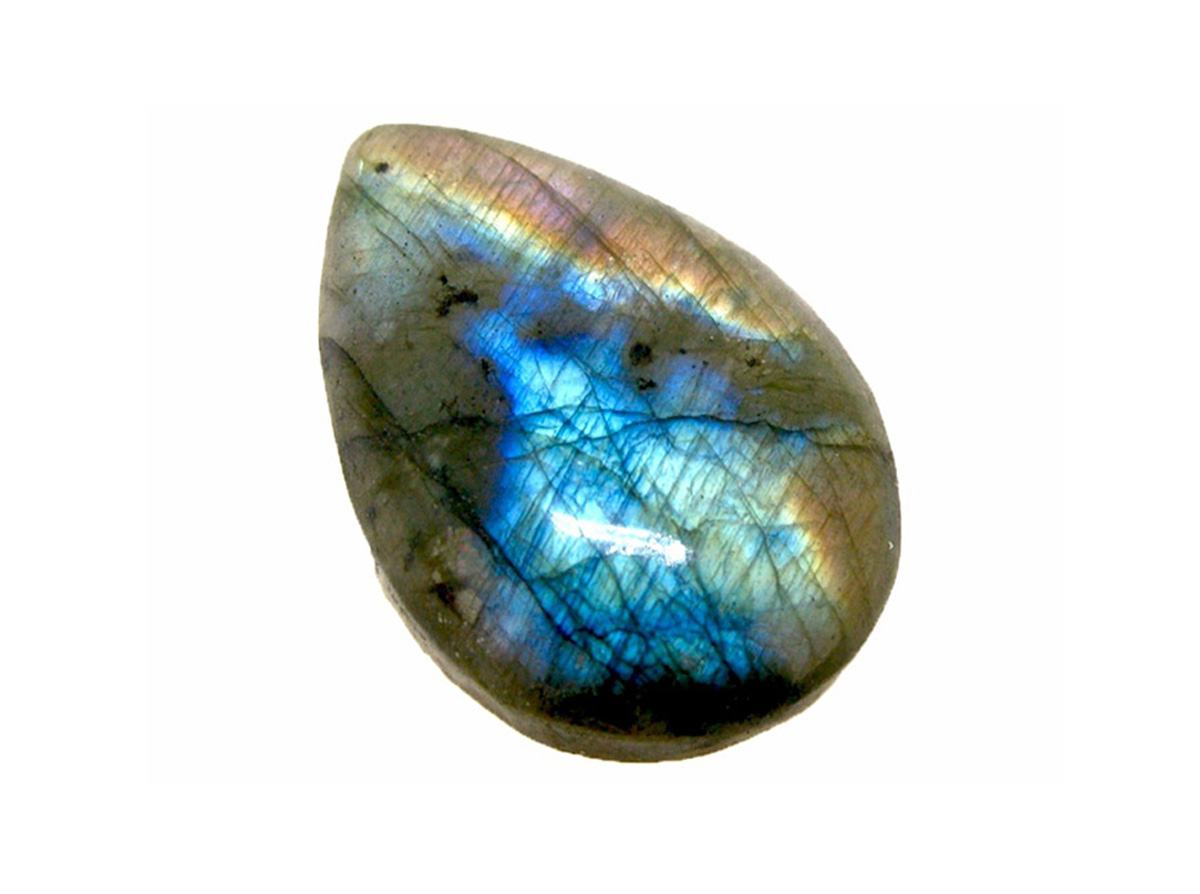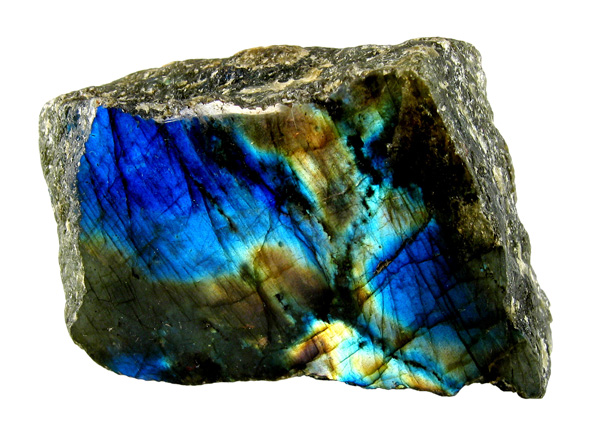

PHYSICAL PROPERTIES
- GROUP Silicates - tectosilicates
- COMPOSITION NaAlSi3O8 - CaAl2Si2O< sub>8
- COLOR Blue, grey, white
- CRYSTALLINE SYSTEM Triclinic
- CRYSTALLINE HABIT Normally massive
- HARDNESS 6 - 6.5
- FRACTURE Unequal to conchoidal
- EXFOLIATION Perfect, good
- GLOSS Vitreous
- STRIP White
- TRANSPARENCY From transparent to translucent
- SPECIFIC GRAVITY 2.7
- REFRACTIVE INDEX 1.56 - 1.57
MINERALOGICAL CHARACTERISTICS
The labradorite belongs to the family of plagioplastic feldspars. Although the base color of labradorite is gray, on its surface it presents chromatic iridescences of purple, orange, red, gold, blue and green. This characteristic is called adularescence and makes labradorite a prized stone for jewelry making.
The name of labradorite comes from the place where it was first found, in the Labrador Peninsula, Canada.
Deposits: Madagascar, Greenland, Finland, United States, Canada, Mexico, Russia and Italy.
THERAPEUTIC PROPERTIES
The labradorite is considered a stone of transformation and protection. Mystical and contemplative qualities are attributed to it. It favors the opening of consciousness and the stimulation of intuition. The labradorite enhances confidence in oneself and in life, calms the mind and strengthens the body and aura.


